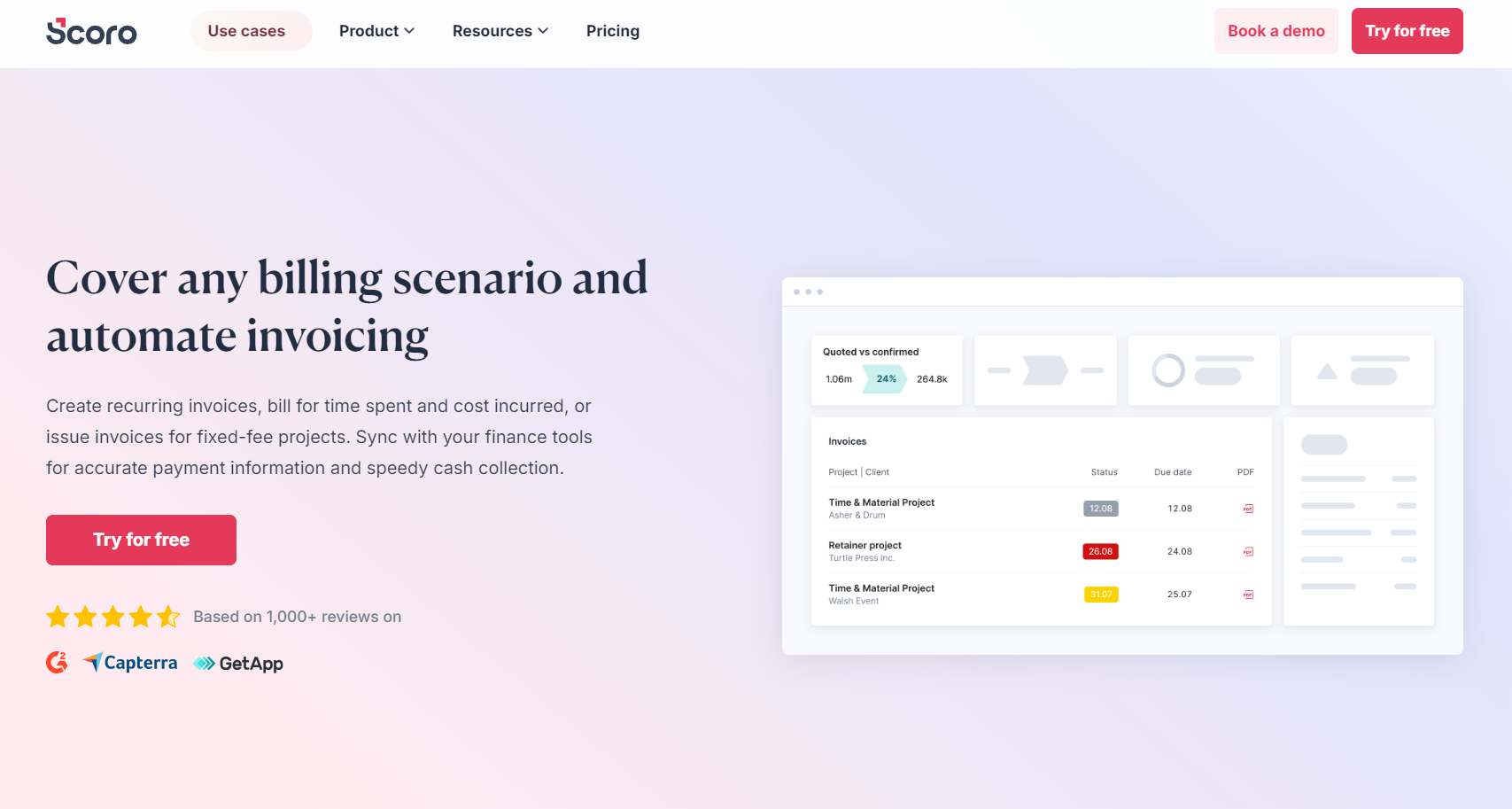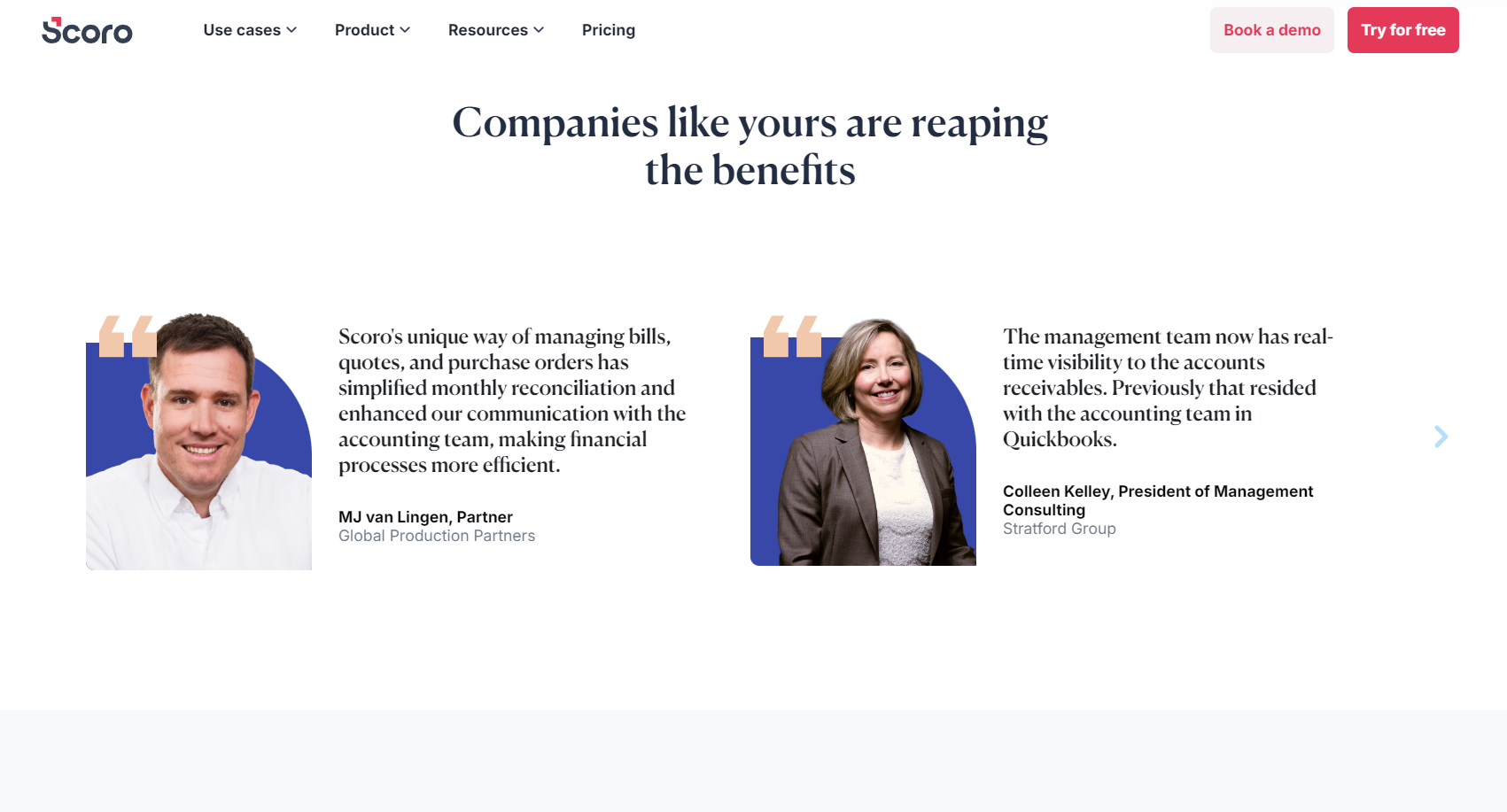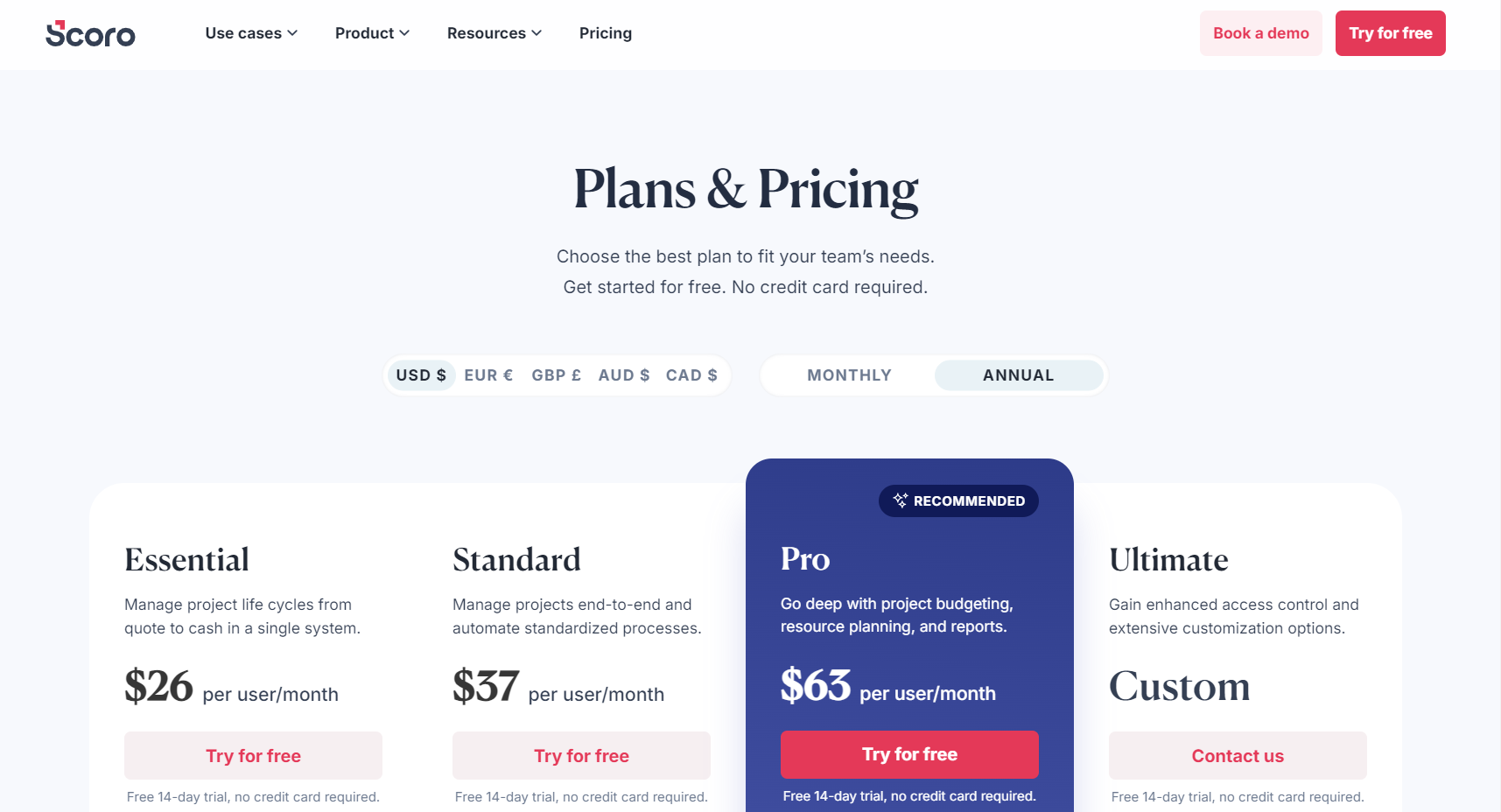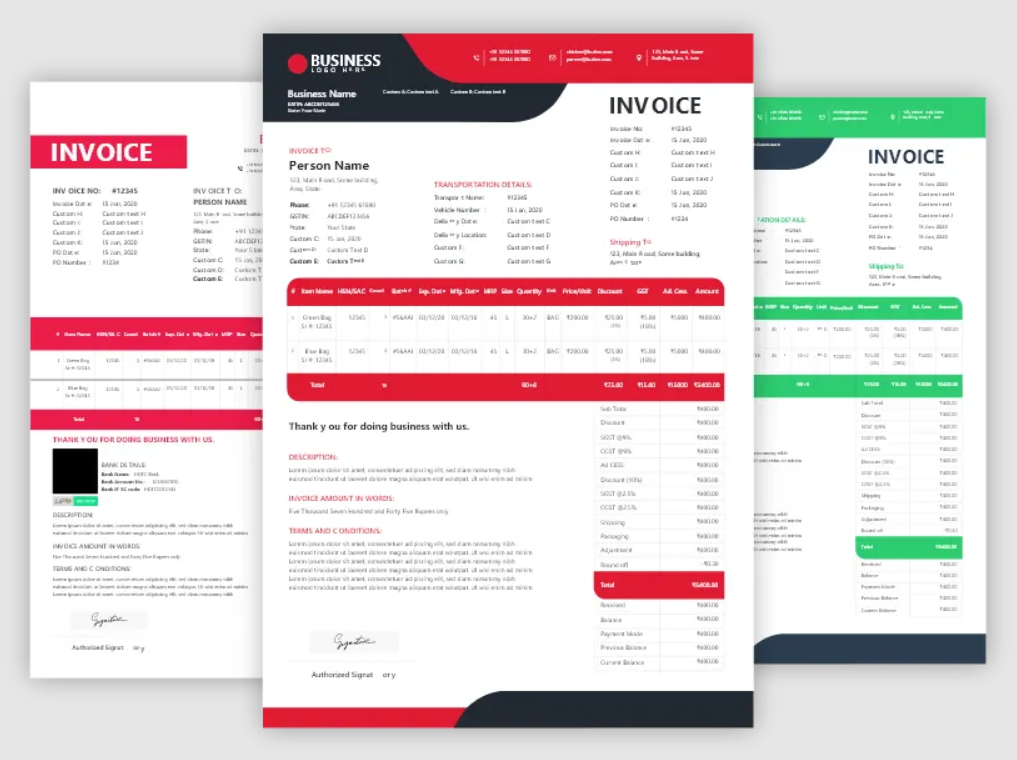Introduction
Do you know that efficiently managing projects, time, and finances can make or break your business? Does Scoro really live up to its promise? Scoro, an all-in-one work management platform, claims to streamline your operations from quote to cash. However, is it truly the transformative solution it’s marketed as, or just another overhyped software that leaves you with a drained budget and a heavier workload? You’ll want to explore Scoro’s invoicing and billing features in depth to decide whether it’s worth integrating into your business or better left alone.
>>> MORE: Cin7 vs NetSuite
LET’S CUT TO THE CHASE!

- You run a professional services firm looking for an all-in-one solution
- You need robust project management integrated with financials
- You want to automate your invoicing processes
- You’re struggling with resource planning and utilization
- You need better visibility into project profitability
- You’re a small business with simple invoicing needs
- You’re on a tight budget and can’t justify the cost
- You need advanced accounting features
- You prefer specialized tools for each business function
- You’re not ready to commit to a comprehensive platform
Scoro provides an impressive array of features aimed at professional services firms seeking to streamline operations. You should expect to pay a premium for this comprehensive platform, and it may be more than what smaller businesses or those with simpler needs require. If you’re ready to make the investment and fully utilize its capabilities, Scoro could transform your workflow. However, if basic invoicing is your primary concern, you might want to explore other options.
NOW, LET’S DETAIL THINGS FOR YOU.

Scoro doesn’t exactly broadcast its pricing, so you’ll need to explore its site to uncover the details. Here’s the breakdown: the Essential Plan costs $26 per user per month, the Standard Plan is $37 per user per month, the Pro Plan comes in at $63 per user per month, and the Ultimate Plan offers custom pricing.
Before you pull out your calculator, remember these rates apply to annual billing. If you prefer monthly payments, you’ll be paying a bit more. Plus, there’s a minimum of five users required. Whether you’re a solo entrepreneur or a small team, you’ll still need to pay for at least five seats.
The Essential Plan gives you the basics, including projects, calendars, task lists, contacts, quotes, bills, invoices, and receipts. While it’s a good starting point, you might find yourself wanting more. The Standard Plan introduces Gantt charts, time tracking, project templates, and some automation features. It’s a solid upgrade and ideal for many small to medium-sized businesses.
The Pro Plan takes things further with resource planning, project budgets, retainer management, and a sales pipeline, perfect if you’re serious about optimizing your operations. The Ultimate Plan, with its unlimited custom fields, company budgets, forecasts, scheduled invoicing, and single sign-on, offers all the advanced features. However, you’ll need to contact Scoro for pricing, which usually indicates a higher cost.
Scoro also provides different onboarding packages, though pricing isn’t listed for these. You can choose from free self-onboarding, assisted onboarding for teams up to 15 people, professional onboarding for 15-49 people, or custom onboarding for teams of 50 or more. To get pricing for these packages, you’ll need to reach out to Scoro’s sales team.
WHAT'S THE CATCH WITH SCORO?
Now, to address the elephant in the room—does Scoro’s pricing come with a catch? While it maintains relative transparency about its pricing tiers, you need to stay alert to a few key considerations.
First, the 5-user minimum can present a significant challenge if you’re a solo entrepreneur or part of a small team. Essentially, you’ll end up paying for seats you don’t use. Another factor to consider is the pricing structure itself. The prices you see are based on annual billing, and if you prefer monthly billing for more flexibility, you’ll pay a higher rate.
Be mindful of hidden costs as well. While the base pricing is clear, Scoro doesn’t explicitly mention the potential additional charges for integrations, advanced features, or customizations, all of which could drive up your expenses. Onboarding fees also lack transparency, and this could add a substantial amount to your initial investment, so ask for clarity upfront.
Speaking of commitments, watch out for contract lock-ins, as long-term contracts could make it difficult for you to switch if you’re not fully satisfied. If you’re not careful, you might find yourself upsold on services you didn’t anticipate needing.
While these points aren’t necessarily deal-breakers, you should definitely keep them in mind when evaluating Scoro. Always read the fine print carefully and ask detailed questions to fully understand what’s included in each pricing tier, and more importantly, what isn’t.
>>> PRO TIPS: Best Accounting Software for Self-Employed
WHAT YOU NEED TO KNOW
Scoro employs a per-user pricing model, which means your costs will scale with your team. This can be advantageous for growing teams, but you might find it becomes expensive as you add more users. Each pricing tier unlocks additional features, so you may need to upgrade to access a specific function, even if you don’t require everything else included in that tier.
Scoro provides a 14-day free trial, but you’ll need to enter your credit card information to access it. While this practice is not unusual, it’s important to keep in mind. Although Scoro offers a high degree of customization, some features may incur additional costs, particularly at the lower tiers.
The platform integrates with many popular tools, but certain integrations may require extra fees or higher-tier plans. You can choose to pay in USD, EUR, GBP, AUD, or CAD, but be aware that prices may vary slightly based on your selected currency. Scoro provides discounts for nonprofit organizations, but you’ll need to reach out to its sales team for further details.
If you plan to purchase Scoro for a large team, consider negotiating bulk discounts. The platform also offers various add-ons, such as additional storage or advanced reporting features, which will raise your overall cost. Different pricing tiers include varying levels of customer support, with higher tiers generally providing more comprehensive options.
While Scoro’s pricing may appear straightforward at first, many factors can influence your total cost. It’s essential to evaluate your current needs and potential future requirements thoroughly before committing to a plan.
WHAT ARE SCORO'S COMPETITORS OFFERING?

Take a look at how it stacks up against some of its main competitors:
- com: Monday.com offers a pricing structure that starts at $9 per user per month for the Basic plan and goes up to $19 per user per month for the Pro plan. This platform requires a minimum of three users and provides more flexible pricing tiers, although it is less focused on professional services.
- Accelo: It features a variety of tools for project management, client communication, team time tracking, and streamlined invoicing, all integrated into a single centralized platform. The software offers flexible plans that adapt to the needs of professional services businesses, with options and unique requirements. Each tier builds on the previous one, adding features like client retainer management, advanced automation, and adaptive project scheduling. Notably, the platform does not disclose its pricing, encouraging interested users to book a demo for more information.
- Harvest: Harvest’s pricing is straightforward at $10.80 per user per month when billed annually. With no minimum user requirement, Harvest focuses primarily on time tracking and invoicing but does not offer the depth in project management that you might need.
- Teamwork: Teamwork allows free access for up to five users, after which it charges $10 per user per month for Pro and $18 per user per month for Premium. This platform also has no minimum user requirement for its paid plans, boasting strong project management features but less robust financial tools.
WHAT AFFECTS SCORO'S PRICES?

Here are the factors that influence Scoro’s pricing structure:
- Feature Development: Scoro continually adds new features and improvements, which requires ongoing investment in research and development.
- Integration capabilities: Maintaining and expanding integrations with other popular business tools adds to Scoro’s operational costs.
- Customer Support: Providing comprehensive support, especially for higher-tier customers, requires significant resources.
- Server and Infrastructure Costs: As a cloud-based solution, Scoro needs to maintain robust and secure infrastructure.
- Market Positioning: Scoro positions itself as a premium, all-in-one solution for professional services firms, which is reflected in its pricing.
- User Base Size: The number of users on the platform can affect pricing, as more users require more resources to maintain service quality.
- Customization Options: The ability to customize the platform for specific business needs adds value but also increases development and support costs.
- Data Security and Compliance: Maintaining high standards of data security and compliance with various regulations adds to operational costs.
- Training and Onboarding Resources: Developing and maintaining comprehensive training materials and onboarding processes contributes to overall costs.
- Competitor Pricing: While not directly influencing costs, competitor pricing does affect how Scoro positions its own pricing in the market.
WHAT AFFECTS PRICES IN THE INDUSTRY OVERALL?
The project management and invoicing software industry is dynamic, with several factors influencing pricing across the board:
- Market Demand: As more businesses recognize the need for comprehensive project management and invoicing solutions, increased demand can drive prices up.
- Technological Advancements: The integration of AI, machine learning, and other advanced technologies into these platforms can increase development costs and, consequently, pricing.
- Feature Arms Race: Competition leads to continual feature additions, which can drive up costs and prices.
- Data Storage and Processing Needs: As businesses generate and analyze more data, the costs associated with storing and processing this data increase.
- Cybersecurity Requirements: With growing cybersecurity threats, companies need to invest more in securing their platforms, which can affect pricing.
- Regulatory Compliance: As data privacy regulations like GDPR become more stringent, compliance costs increase, potentially affecting pricing.
- Integration Complexity: The need to integrate with an ever-growing number of third-party tools increases development and maintenance costs.
- Cloud Infrastructure Costs: Fluctuations in cloud computing costs can impact the operational expenses of SaaS companies.
- User Expectations: As users become more sophisticated, their expectations for intuitive interfaces and powerful features increase, driving up development costs.
- Economic Factors: General economic conditions, inflation, and currency fluctuations can all impact pricing in the industry.
>>> GET STARTED: Cin7 vs Fishbowl
HOW TO GET THE BEST DEAL WITH SCORO?

If you’ve decided that Scoro is the right fit for your business, here are some strategies to ensure you’re getting the best possible deal:
- Evaluate Your Needs Thoroughly: Don’t overbuy. Carefully assess which features you actually need and choose the appropriate plan.
- Consider Annual Billing: If you’re confident about committing long-term, opt for annual billing to save on per-month costs.
- Start With a lower Tier: Begin with a lower-tier plan and upgrade only when necessary. This allows you to test the waters without overcommitting.
- Negotiate for Bulk Discounts: If you’re purchasing for a large team, don’t hesitate to ask for volume discounts.
- Look for Promotional Offers: Keep an eye out for seasonal discounts or promotional offers, especially around the end of financial quarters.
- Maximize the Free Trial: Use the 14-day free trial to its fullest. Test all relevant features to ensure Scoro meets your needs before committing.
- Ask About Nonprofit Discounts: If you’re a nonprofit organization, inquire about special pricing options.
- Consider Long-Term Contracts: If you’re sure about using Scoro long-term, ask if they offer additional discounts for longer contract commitments.
- Optimize User Licenses: Only purchase licenses for team members who will actively use the platform. Remember the 5-user minimum, though.
- Leverage the Onboarding Process: Make the most of the onboarding process to ensure you’re set up for success from the start.
- Request a Custom Demo: Ask for a personalized demo focusing on your specific needs. This can help you identify the most cost-effective plan for your requirements.
- Inquire about Package Deals: If you need multiple Scoro products or services, ask if it offers package deals.
- Regularly Review Your Usage: Periodically assess your Scoro usage. You might find opportunities to optimize your subscription or identify underutilized features.
- Engage With the Scoro Community: Connect with other Scoro users through forums or user groups. They might have insights on getting the best value from your subscription.
CAN YOU AFFORD SCORO'S PRICES?
Can you determine whether Scoro’s prices are affordable by calculating the total cost of ownership, including the annual subscription, onboarding fees, necessary add-ons, and potential costs for additional storage or features? How much time could Scoro save your team in project management, and what is the value of that time in terms of billable hours or increased productivity? Finally, how will better project management and improved invoicing processes impact your revenue, cash flow, and overall business growth?
Here’s a practical example to illustrate:
For a small agency with seven team members considering the Pro plan at $63 per user per month, the annual cost would be $5,292. Estimating the benefits reveals potential time savings of 5 hours per week per person, valued at $100 per hour, resulting in an annual value of $182,000.
Additionally, a 5% increase in on-time payments from improved invoicing could yield $25,000 based on current annual revenue of $500,000. Combining these benefits totals approximately $207,000, significantly outweighing the cost and indicating that Scoro could be an excellent investment, though actual results may vary based on your specific circumstances and implementation.
FINALLY: SHOULD YOU BUY SCORO OR NOT?
After diving deep into Scoro’s features, pricing, and comparisons with competitors, it’s time to make a call. The verdict? If you’re running a professional services firm and you’re serious about optimizing your operations, Scoro is worth the investment.
Why? Because Scoro isn’t just another invoicing tool. It’s a comprehensive work management platform that can revolutionize how you run your business. However, Scoro isn’t for everyone.
The bottom line is this: Scoro is a powerful tool that can transform how professional services firms operate. Its comprehensive feature set, focus on integration, and potential for automation make it a strong contender in the work management space. Yes, it’s pricier than many alternatives, but for businesses that can leverage its full potential, the return on investment can be substantial.
However, it’s crucial to carefully evaluate your specific needs, budget, and readiness for change before committing to Scoro. Take full advantage of the free trial, engage with their sales team to understand how Scoro can be tailored to your needs, and if possible, talk to other businesses in your industry who are using Scoro.













